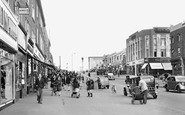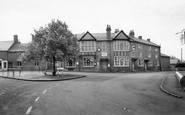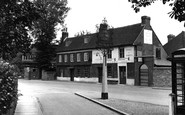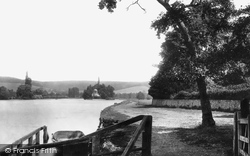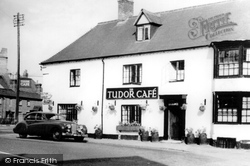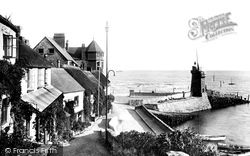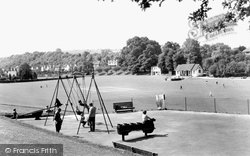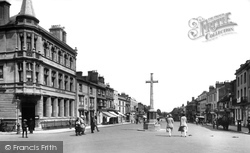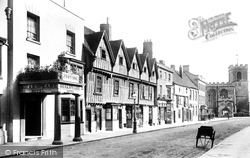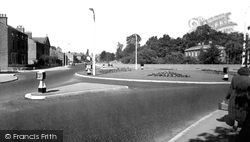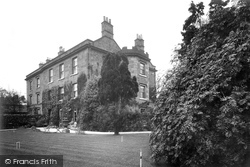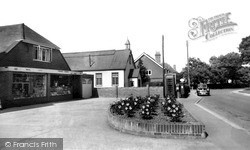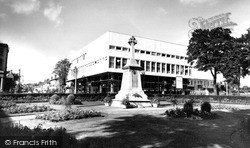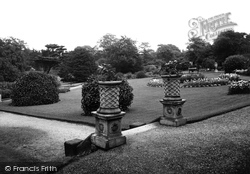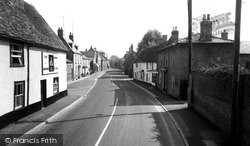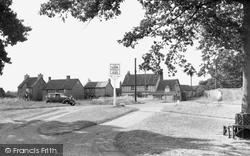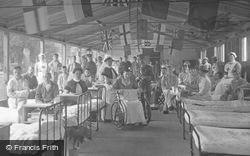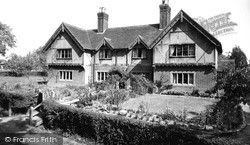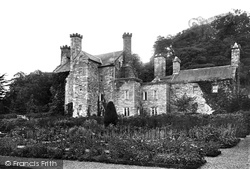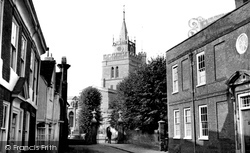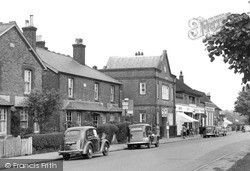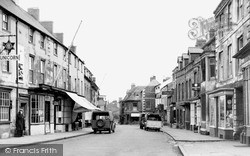Places
3 places found.
Those places high-lighted have photos. All locations may have maps, books and memories.
Photos
37 photos found. Showing results 181 to 37.
Maps
8 maps found.
Books
Sorry, no books were found that related to your search.
Memories
727 memories found. Showing results 91 to 100.
Personal Reflections
I was born in Sandleaze, Worton in 1957. I was brought up at 1 Mill Road near the Marston boundary. I remember many things about the village especially the Rose and Crown Pub and the Mill. I remember with pride the war ...Read more
A memory of Worton by
Wartime Years In Llanarmon Yn Ial
Shortly after the outbreak of war, my Father who had a pet shop in Wallasey, evacuated the family to Llanarmon. We consisted of Dad, Mum, my brother Ray and myself. We moved into Rose Cottage in the village, ...Read more
A memory of Llanarmon-yn-Ial in 1940 by
My Memories Of Salford
I was born in the upstairs back room of my maternal Gran's house at 20 John Street, Pendleton. I was told there was an air raid going on at the time. My first school was John Street where there was a play ground on the roof, but ...Read more
A memory of Salford in 1951 by
It Must Have Seemed Like Bluewater Then!
It was either a long walk or a ride on the 174 bus from Oxlow Lane shops to the Heathway. It surprises even now just what variety there was there, no need to have to travel miles to get a new shirt or the new ...Read more
A memory of Dagenham in 1965 by
The Nag''s Head
One didn't have to travel to London in the past to watch pro bands plying their trade. The Nag's Head public house was a much attended venue during the late 1960s and early 1970s for watching many of the (what was then known as) ...Read more
A memory of Wollaston in 1969 by
Mossband Camp
My father was a serving soldier, serving at the RAOC camp until 1948. We lived in the YMCA building in the camp itself and it had a large functions hall attached where one of our officers once entertained the children at Christmas ...Read more
A memory of Mossband Ho in 1947 by
Hackbridge
I lived in Orchard Avenue, number 4, when the whole road was mock Tudor exteriors. I had quite a shock to revisit a few years ago to see them all plastered over and looking very tired. In the l950s and early 1960s when I lived here we ...Read more
A memory of Hackbridge in 1956 by
Growing Up In The 1950s
Dad was the village policeman, PC 39. Our family name was Moss. We lived outside the village near the T junction to Little Waldingfield (two farm houses, we lived in one of them). Dad, mum and my 4 sisiters. We all ...Read more
A memory of Great Waldingfield in 1951
Happy Days
i was born in Algers Road, Loughton in 1942 and moved to Chigwell in 1944, then back to Buckhurst Hill in 1947. My dad worked as a lorry driver for W.C.French. My brother Chris and friends used to walk up to Buckhurst Hill High Road ...Read more
A memory of Buckhurst Hill in 1947 by
Early Schooldays
My memories of Byfield, where I lived on the brand new council estate, in Lovett Road, are idyllic. I was there from age 6 to 10, then we moved to York. We children had to walk what seemed like miles, in all weathers, to the village ...Read more
A memory of Byfield in 1954 by
Captions
240 captions found. Showing results 217 to 240.
From the bridge northwards, first was the Red Lion, once a great coaching inn which adapted to the changing times by rebuilding most of its stable block as boathouses in 1888 - the stable blocks
This came about because, between 1707 and 1723, the installation of turnpikes on local roads led to such an improvement in their condition that Dunchurch Road became a major thoroughfare.
The house was silent and no one seemed to be about … It was one of the loveliest mornings that ever dawned upon this world … The clear pure crisp air of the early morning blew fresh and exhilarating
In the High Street several very high quality brick-fronted houses were erected with fashionable sash windows, modillioned cornices and parapets.
Of the latter W G Gardner, station-master at Coulsdon South from 1891, recorded in 1916 the growth of the parish from a hamlet to an urban district: `Red Lion Green was a Green in every particular
The Red Horse Hotel is where Washington Irving penned his paper on the town.
The Red Horse Hotel is where Washington Irving penned his paper on the town.
The Red Horse and the Golden Lion were slightly cheaper.
It looks much the same today, with attractive flower- beds, although it has been reduced in size to aid the flow of the traffic.
Once part of the council offices, today it houses Paxtons Restaurant downstairs and a bed and breakfast above. The gardens are open at all times, and can be accessed from the riverside walk.
A well-maintained semi-circular bed of roses has been planted on the forecourt - oh for a dash of colour!
The flower beds and war memorial have now been replaced by the roundabout and pedestrian subway and the first houses in Park End Road have been replaced by the extension to the Town Hall.
This photograph looks across Mayer Park from the terrace of Mayer House. The park still serves as a peaceful oasis for the people of Bebington.
The George & Dragon public house in the foreground (left) was demolished in 1964 to allow very long concrete pillars to be transported around the corner.
A lane leads left to the church and manor house, and to the right is Burycroft, which leads to the medieval bridge and then Abingdon.
The Arndale House building is much the same, but the cinema has made way for the Cornhill shops, and beyond the canopy of the Town Hall extension are the new shops which have
The 1st Eastern General Hospital was set up in Nevile's Court in Trinity College at the beginning of World War 1, with beds placed around the cloisters.
This pair are dated 1890, and the gable ends have inscriptions which read: 'Turn fortune turn thy wheel; with smile or frown; our hoard is little; but our hearts are great: Except the Lord build the House
The fortified manor of the Wynn family, built at various stages from around 1490, is seen with carefully tended beds and wisteria and ivy-clad walls.
Looking east from the drive to the Manor House and church, the village green in 1897 was all but submerged in tall trees. These have gone and there are much more modest trees in their place.
On the left are Hickman Charity houses; the jettied timber-framed cottages were bought and refurbished in the 1980s, and the timber-framing exposed. On the right is the old Grammar School.
The post office on the left is now a house; the post office has moved across the road into Read the tobacconist's next to the Gedling Wine Stores on the corner of Waverley Avenue – this shop is now
The Green is out of view to the right; the buildings we see here are on its north side - the houses are dated 1898.
Further along, the grocer's is an early 18th-century house of 2½ storeys with quoins. There follow more 18th-century buildings where the façades usually conceal much older rem- nants.
Places (3)
Photos (37)
Memories (727)
Books (0)
Maps (8)



